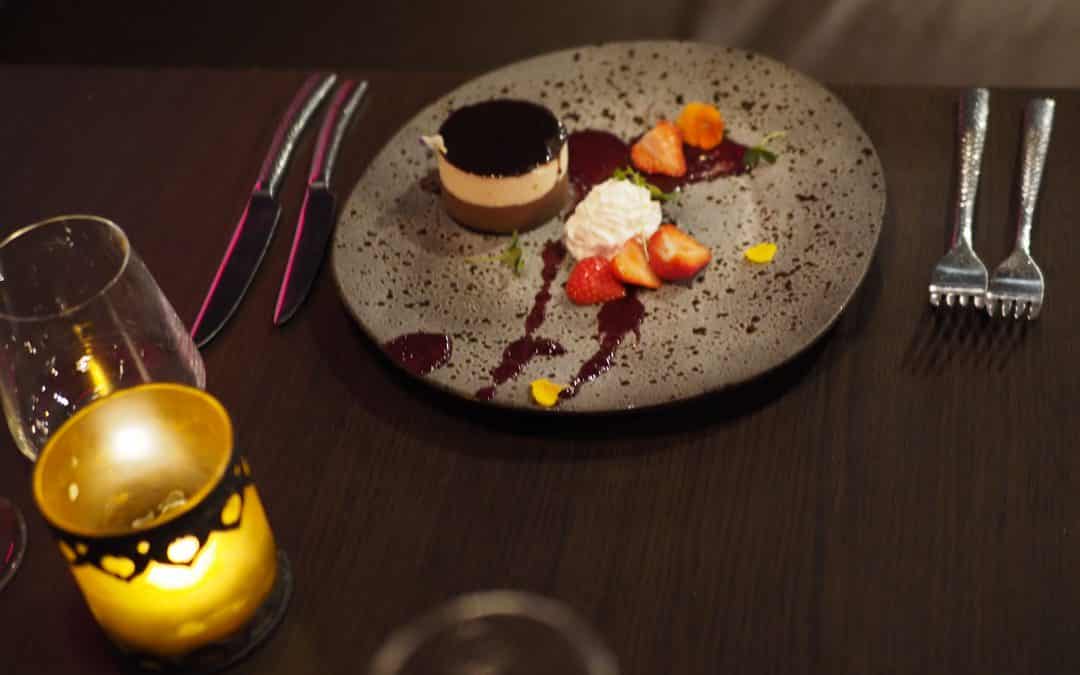If you’ve ever been to an Indian restaurant and had a good waiter, you might not even realise you’re being up-sold to. You enter into the restaurant, and sit down, and the waiter comes along and offers you water. You say “Yes please!” The waiter nods, and asks you if you’d like still or sparkling water. This is the up-sell. You have two options given to you, both which lead to you getting something. If you choose the sparkling water, the waiter has up-sold you. You never came into the restaurant wanting sparkling water, but now you might.
Your waiter brings you your sparkling water, and asks if you’d like to have some pappadums as he hands you the menu. The reason your table doesn’t have a menu is because it gives the waiter a natural reason to come over to you to sell these pappadums. As you’ve entered the restaurant feeling a little hungry, this is a nice offer. Most people are likely to take pappadums whilst ordering their meal. The waiter will then take around 5-7.5 minutes to come back to you if they’re not too busy. This will give you time to choose what you’d like.
Ordering
The time has come to order your meal, the waiter returns to you, bringing your pappadums, and cheerfully asks what you would like for a starter. This is incredibly subtle, but you may not have intended to go for a starter. Some people will reconsider and get a starter, usually something a little cheap. Lots of people start with starters anyway, so it’s a normal, rather than a forceful question. You may decide just to skip to the main course like I do! If you’re having a romantic dinner out though it might be hard to resist ordering a starter! If you’re unsure, the good waiter will have a recommendation! The waiter proceeds to take your main course orders as well, making sure to ask if you want one of their delicious sides! This is another fantastic up-sell if done correctly! Then he asks you if you’d like any drinks.
Sometimes, the waiter will ask people if they’d like to try one of the red or white wines. A good waiter will be able to judge the right people to serve in this way, and base the choice on the food being ordered. They will give two options to choose both with decent profit margins for the restaurant, whilst keeping it so the choice isn’t an extortionate one. The drinks will arrive quickly, so that the customer will have time to enjoy them with their pappadums and starter before the main meal arrives. The customer is unlikely to finish their drink before the main meal arrives. The starter is usually finished pretty quickly, and the drinks are usually down to about 1/2 or 1/3 full. This will give the waiter a window of opportunity to ask if the customers want more drinks later, during their meal.
Main Meal
The main meal arrives and the waiter takes a quick glance to see if the table needs any drinks. If they’re required, the waiter has remembered the previous order and asks the customer if they want more of the same. By remembering what the customer has ordered, the waiter shows he cares about them. The waiter will then put another order through if needed. You are generally left to enjoy your meal with the person or people you’re eating out with. The waiter won’t bother people much, if at all during the main meal. If the waiter notices you finish your drink they will wait around 3-5 minutes to see if you wish to order one before offering. If you accept, there’s a chance you’d only have got that drink if the waiter intervened.
Desserts
It’s been an amazing evening and you’ve downed way too many glasses of Château Latour. You don’t even know what it tastes like anymore, it’s just amazing red plonk. You look up from your miasma and see the friendly blur who’s been serving you all evening looking down at you with a charming smile. He asks if you’d like any desserts. You are unlikely to turn them down unless you’re feeling exceptionally full. You accept and order something off the menu. If you weren’t thinking about ordering dessert, you’ve been up-sold to again. .
So I had a nice meal! What happened?
You’ve gone out to a restaurant. The waiter has sold you a sparkling water, pappadums, more expensive drinks than you’d planned on getting and a dessert. Maybe one or two other things as well! Now this isn’t a bad thing, because you’ve had a great evening out! You just spent a lot more than you thought you might originally. If the waiter has been brilliant, you may even tip him for this service.
Training your Staff to Up-Sell
Your staff will need an excellent knowledge of your menu. Which dishes work best with and compliment other dishes. Which items are preferred at different hours of the day, and which ones will make the business the most money. Your staff will need to know what they’re talking about when selling your food. You should get them to try as much of the menu as possible. This will give them the first hand experience they need to convincingly sell to customers. If your staff are diligent and intelligent, they will also know a little bit about how certain items are made, and be able to describe the meals in detail.
Your staff will also need to know which drinks work best with certain dishes. They should know your wines list inside out! If asked they should be able to give recommendations of good wines to customers whilst keeping a good profit margin for the restaurant. A diner is much more likely to listen to the advice of a confident and enthusiastic waiter than to make another choice from the menu.
When picking your waiting staff, it’s always good to choose enthusiastic people. Enthusiasm is great when it comes to up-selling to a customer because a cheery nature is preferable to someone who looks bored or disinterested. If your waiter is enthusiastic about selling the items on the menu, you will be excited about trying them! If your waiter couldn’t care less, you might just go out for a kebab instead.
Always take things slowly.
Whilst I’ve explained everything happening in this up-selling scenario, it happens over the space of an evening out. Waiters need to be careful when up-selling and do it only at times when it feels right. They should leave about 7 to 10 minutes in between attempts to up-sell, and give the customers space. If a waiter constantly bombards customers with up-selling techniques, they may push the customer away and they might not want to come back. A few up-sells per table works well, maybe two to three per table throughout the night. This will be fine and give people time to enjoy the evening without being bothered. The best way to up-sell is just to make everything part of the natural conversation. This way the customer doesn’t even realise they’re being up-sold to.
Up-Selling isn’t Natural…
Up-selling is something that has to be trained. Your staff may not immediately pick it up. You will have to teach them how to up-sell to customers as it’s beneficial to a restaurant’s success. If your staff need an incentive, you can always offer a reward to the staff member who up-sells the best in a week. Soon you may find that your staff are looking up these techniques online and studying them just so they can get the reward.
This is not a comprehensive guide to up-selling techniques, however it’s a quick glimpse into a technique that can be applied to any restaurant out there. If you are a restaurant owner, teach your staff to up-sell, and your profits will increase. Think of it like this. If two people usually spend £30.00 in a night. Wouldn’t it be better if you could get them to spend £45.00-£50.00? These are just a few little up-selling ideas! If you own a restaurant or work at one, why not try them out and see what happens!

I’m a social media marketing specialist based in Wivenhoe, the CEO of Fantasoft and wannabe space adventurer.


